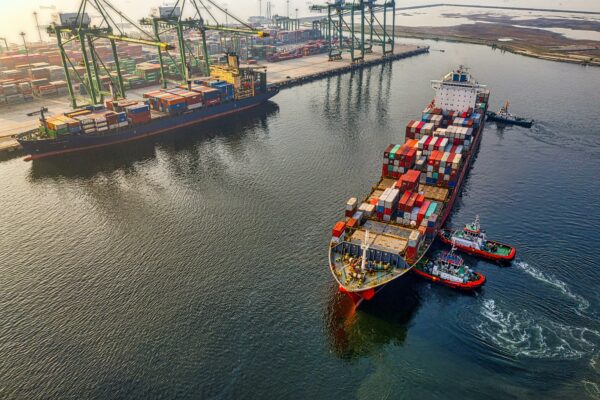Making a business case for sustainable supply chains
Sep 13, 2023
Scroll to find out more
Sep 13, 2023
Scroll to find out more

In a challenging commercial environment, all eyes go to the bottom-line. Nice-to-have ideas quickly drop down the list in favour of core concerns like profitability, service and cash flow. Sustainability sits in an as-yet-uncertain middle ground – brands talked a big game in the era of low interest rates and ethical scrutiny, but when the chips are down, some may be inclined to push green initiatives onto the back burner.
In reality, this is a false economy – while businesses may be inclined to delay their engagement with sustainable change, the reality is that a lack of investment in this area today is setting up issues in the future. Whether it’s falling foul of public sentiment, inefficient processes losing margin or creating future regulatory liabilities, businesses need to prioritise transitioning to green supply chains before they’re pushed.
We sat down with David de Picciotto, CEO and Co-founder of emissions management platform Pledge, to discuss why now is the time to move and how supply chain leaders can make the case for change.
‘Everyone recognizes that sooner or later… they’ll have to do something to demonstrate their sustainability credentials,” says David. Indeed, the conversation around sustainability has been growing in volume for the last decade, and regulators and business leaders are increasingly putting their money where their mouths are.
Beyond the ethical and environmental imperatives, sustainability offers tangible commercial benefits for businesses who engage proactively:
Embarking on a sustainability journey can seem vague and undefinable, but the key lies in understanding your current emissions output and defining clear objectives to reduce them.
David suggests a foundational approach: “It starts with understanding what you want to achieve and where you’re starting from.”
There are a range of frameworks available, including:
Emissions Reductions Targets Framework: Systems that help businesses set and achieve specific goals for reducing their greenhouse gas emissions.
The right fit for your brand will depend on the market, responsibilities and customer-concerns that apply to your business, tailoring your sustainability journey to your unique operations, goals, and challenges.
Change management is challenging – creating a new framework for success beyond traditional metrics is even moreso. Leaders looking to create a roadmap for sustainability need to contend with complex regulations, securing C-suite buy-in, balancing immediate costs with long-term benefits, and aligning diverse stakeholder expectations. This requires buy-in across the whole organisation and a concerted, coordinated effort.
Executing a sustainability strategy starts with the right data and visibility, combined with the right support to implement changes in your supply chain.
Zencargo works with leading brands in a range of industries to help them measure, analyse and improve their sustainability performance with robust data and innovative freight forwarding solutions. Partnering with Pledge, we offer businesses a comprehensive solution to integrate sustainability into their supply chains, from tracking historical shipment data to providing offsetting options, Zencargo empowers businesses to make informed, sustainable choices.
To find our more about how your business can prioritise sustainability while still achieving commercial targets, get in touch with our team today.

If you’re looking for a partner who can support you through 2024, and beyond, w...

Last updated: Monday 3pm BST On Friday 19th July, an unprecedented global issue...
